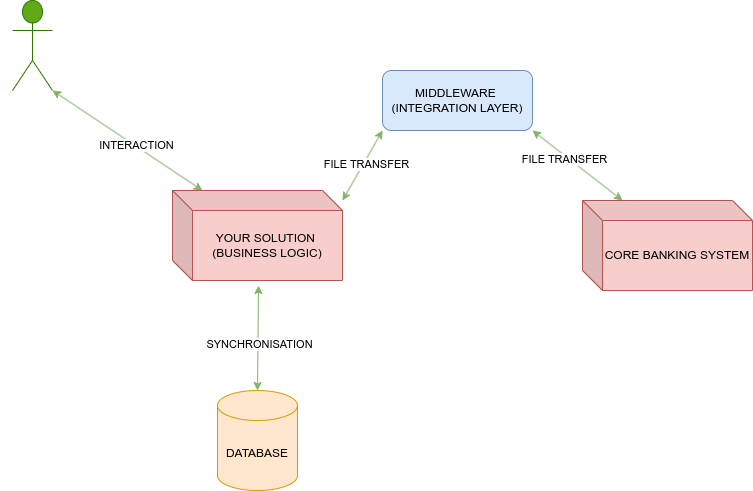The journey takes its first steps in the workplace
 Sofiane Boumelit
Sofiane BoumelitImagine you're an IT consulting company with several banks as clients, using your customized solutions to enhance banking features, improve user experience, and streamline all aspects of transactional operations.
Typically, every bank relies on a Core Banking System (CBS) to manage daily banking transactions, customer data, account management, and transaction processing. Temenos T24, for example, is one of the most widely used CBSs in the industry.
You might wonder, "Why outsource when you have such a powerful system? Isn't it cost-effective and capable of meeting all needs?" The answer is both yes and no. While CBSs are indeed powerful and cost-effective for many standard requirements, they often fall short in terms of customization and innovation with modern technology. Moreover, a customized solution can provide competitive differentiation, helping to attract and retain customers more effectively.
But how do these two systems interact? Generally, we develop what is called an integration layer, which acts as a bridge, facilitating data exchange and ensuring that both systems operate seamlessly together.

Roles such as system integrators are crucial for the overall functioning of the system, especially if the CBS uses fixed-width file formats, which are commonly employed by many CBSs.
In the next article, we will discuss the approach used to manage this type of project and the roles that make up the team responsible for development and maintenance.
Until then, feel free to ask questions or share your knowledge on this topic!
Subscribe to my newsletter
Read articles from Sofiane Boumelit directly inside your inbox. Subscribe to the newsletter, and don't miss out.
Written by

